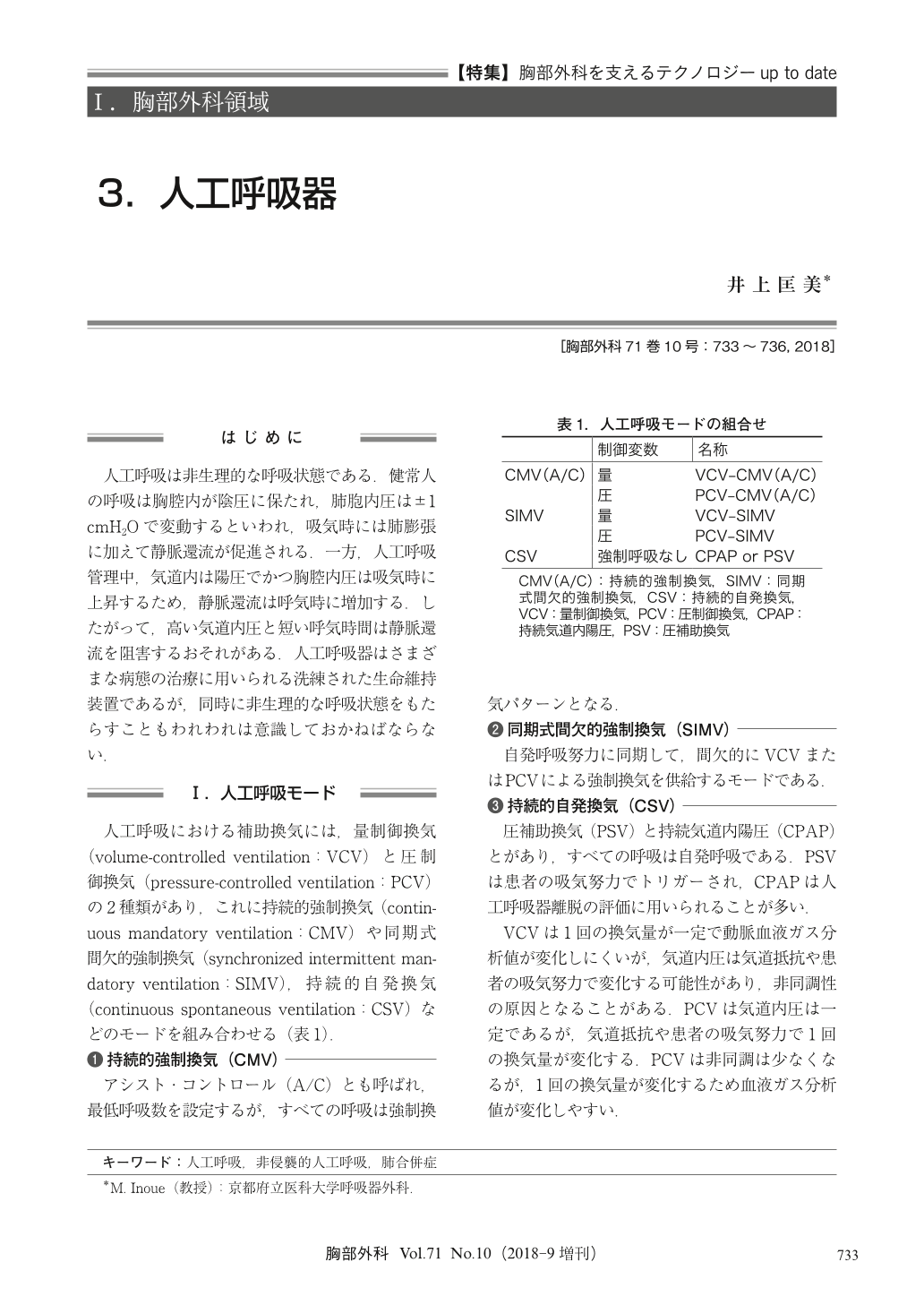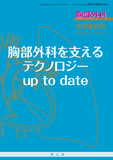Japanese
English
- 有料閲覧
- Abstract 文献概要
- 1ページ目 Look Inside
- 参考文献 Reference
人工呼吸は非生理的な呼吸状態である.健常人の呼吸は胸腔内が陰圧に保たれ,肺胞内圧は±1 cmH2Oで変動するといわれ,吸気時には肺膨張に加えて静脈還流が促進される.一方,人工呼吸管理中,気道内は陽圧でかつ胸腔内圧は吸気時に上昇するため,静脈還流は呼気時に増加する.したがって,高い気道内圧と短い呼気時間は静脈還流を阻害するおそれがある.人工呼吸器はさまざまな病態の治療に用いられる洗練された生命維持装置であるが,同時に非生理的な呼吸状態をもたらすこともわれわれは意識しておかねばならない.
Mechanical ventilation is a useful treatment option for respiratory insufficiency following thoracic and cardiovascular surgery. Ventilation mode is classified as volume-controlled-ventilation (VCV) and pressure-controlled ventilation (PCV). Non-invasive ventilation (NIV) without tracheal intubation has been recently developed and is effective in patients with chronic obstructive pulmonary disease (COPD) exacerbation. Several pulmonary complications by mechanical ventilation such as ventilator-induced lung injury (VILI) or ventilator-associated pneumonia (VAP) could be avoided with NIV. According to the protocol published from Japanese Society of Intensive Care Unit, Japanese Society of Respiratory Care Medicine, and Japan Academy of Critical Care Nursing, both spontaneous awakening trial (SAT) and spontaneous breathing trial (SBT) are recommended at the weaning from mechanical ventilation. I herein describe the utility of mechanical ventilation in patients with major pulmonary resection, myasthenia gravis, lung transplantation, and cardiac surgery, for each. We should understand not only the utility but also the non-physiological condition during mechanical ventilation.

© Nankodo Co., Ltd., 2018


